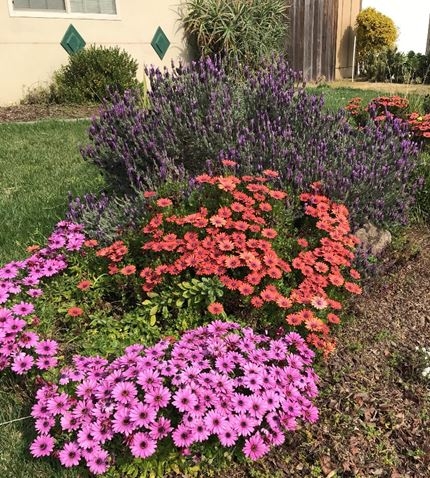Spring is indeed a wonderful time of year. Perennials that have been in a rest-and-relaxation mode suddenly burst into glorious color with no effort from the custodians of the landscape: the home gardener. The sudden burst of color reminds us that there is indeed a season for everything under heaven. The months of April, May, and June are busy with excitement of what to plant, what needs maintenance, and what needs to be eliminated. High on the elimination list are the annual spring weeds and non-performing landscape plants. Our winter preparation and planning are over and it is time for action. For all of us who are senior gardeners, it is also a time of discovery. We may notice that parts of our aging bodies that worked fairly well last year may not be able to do as much or last as long while working to maximize the beauty of our landscape. The saying that we desire to “do as much as we can for as long as we can” takes on new meaning. Mindfulness is an essential component to keep with us as we tackle the chores of spring gardening.
- APRIL: Divide perennials before they leaf out and make room for them to grow. Fellow gardeners usually enjoy swapping with others to get new colors or varieties. It is definitely more fun to gift others with something new rather than dump them in the compost bin.
- Clean up any remaining debris from winter which can often hide snails and slugs. Don't kill a population of beetles or other insects found under garden debris. There are many beneficial insects that feed on undesirable pests. Do some research so beneficial insects can be recognized and protected.
- Keep on top of the weeds and remove them before they go to seed in order to keep weeding chores to a minimum. Letting seed heads fall back into the soil is planting a new crop of weeds for next year.
- Dig out spring bulbs when their foliage has browned unless the intent to let them naturalize. Not all bulbs do well the following year if they are left in the ground.
- Feed both flowering plants and edibles. Keeping up with fertilizing will ensure lovely flowers and bountiful crops.
- MAY: Check and repair irrigation equipment. If you find yourself in over your head, seek help from a professional.
- If planning an edible garden, seeds should be planted to take advantage of the warming soil before the heat of summer sets in.
- Maintain garden tools. Hoes and weeders get a heavy workout going after weeds. Keep them sharp, clean, and in good working order. If the tools are no longer comfortable to use, go shopping at a well stocked nursery and purchase ones of the newer ergonomically designed tools for arthritis.
- Replenish mulch. Fresh mulch will give a fresh new look to the landscape. Even the weeds look better.
- Remove fall planted annuals. Even though they may still look good, they will quickly die when the summer heat arrives.
- JUNE: Deadhead flowering plants to keep them blooming longer.
- As spring days turn warmer towards the coming heat of summer, be sure to monitor the water needs of your landscape.
- As problems or questions arise, help is available through the Master Gardener website: http://sjmastergardeners.ucanr.edu, the Master Gardener at helpline: 209-953-6112, or the UC IPM website www.ipm.ucdavis.edu.
Source material: Sunset Western Garden Book
A Valley Gardener's Journal for Year-Round Blooms: SJC Master Gardeners UCCE